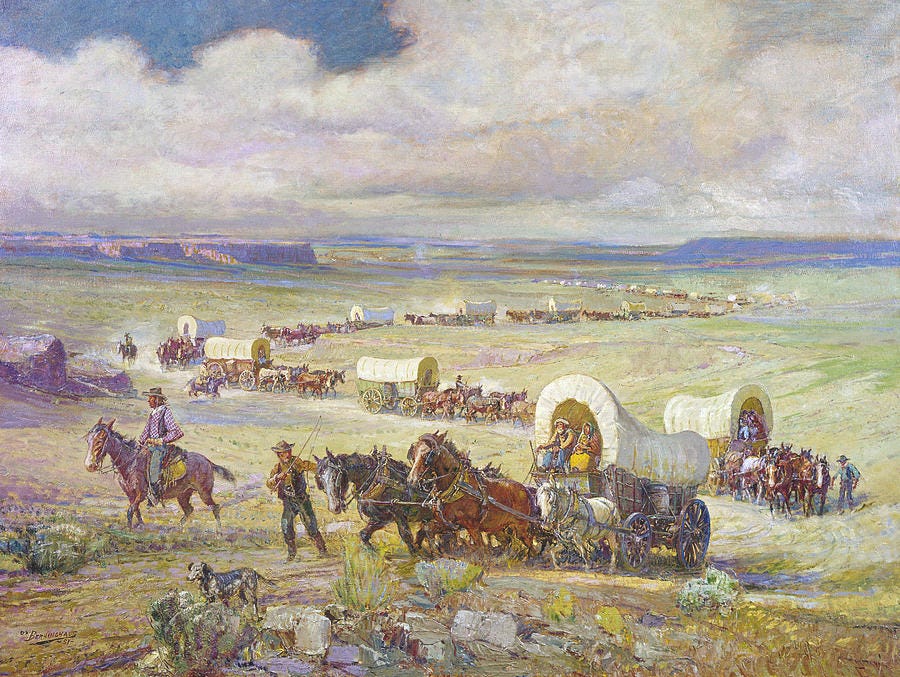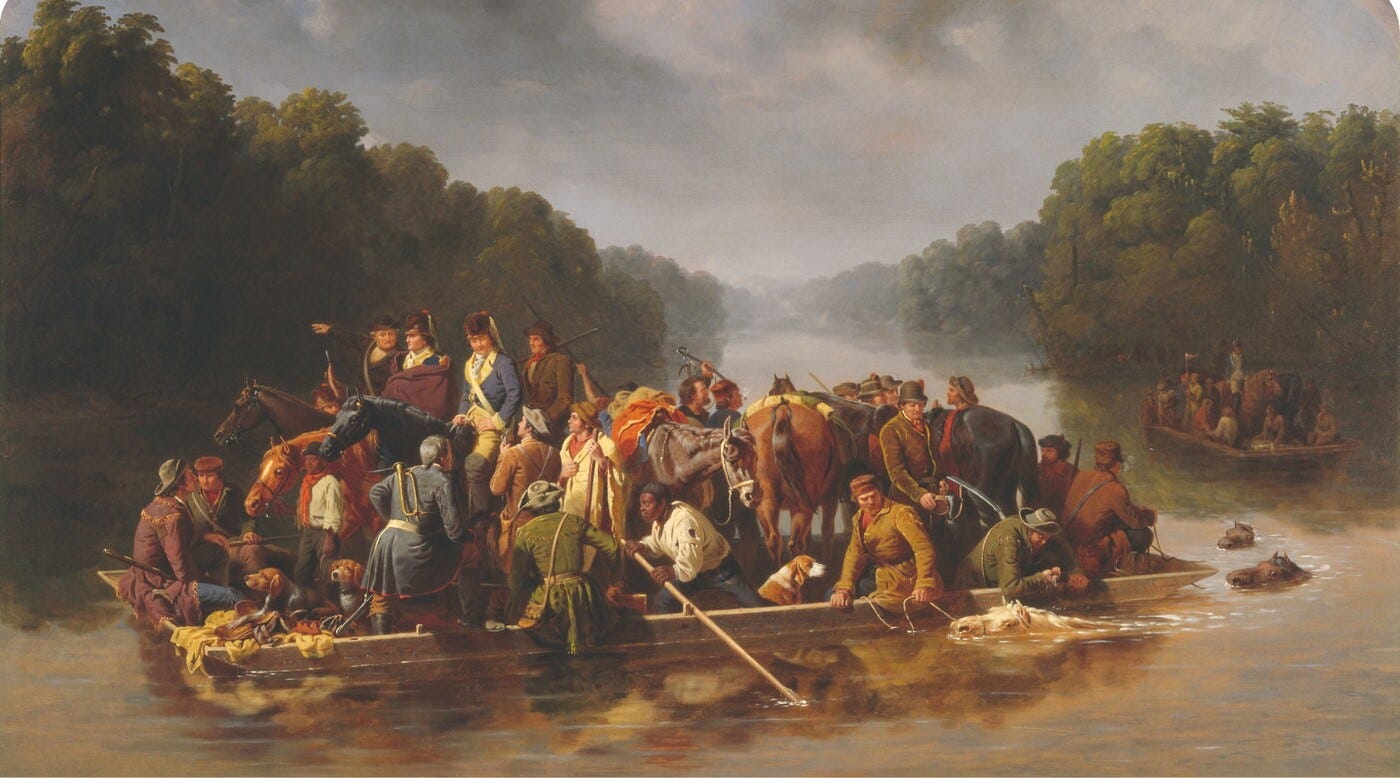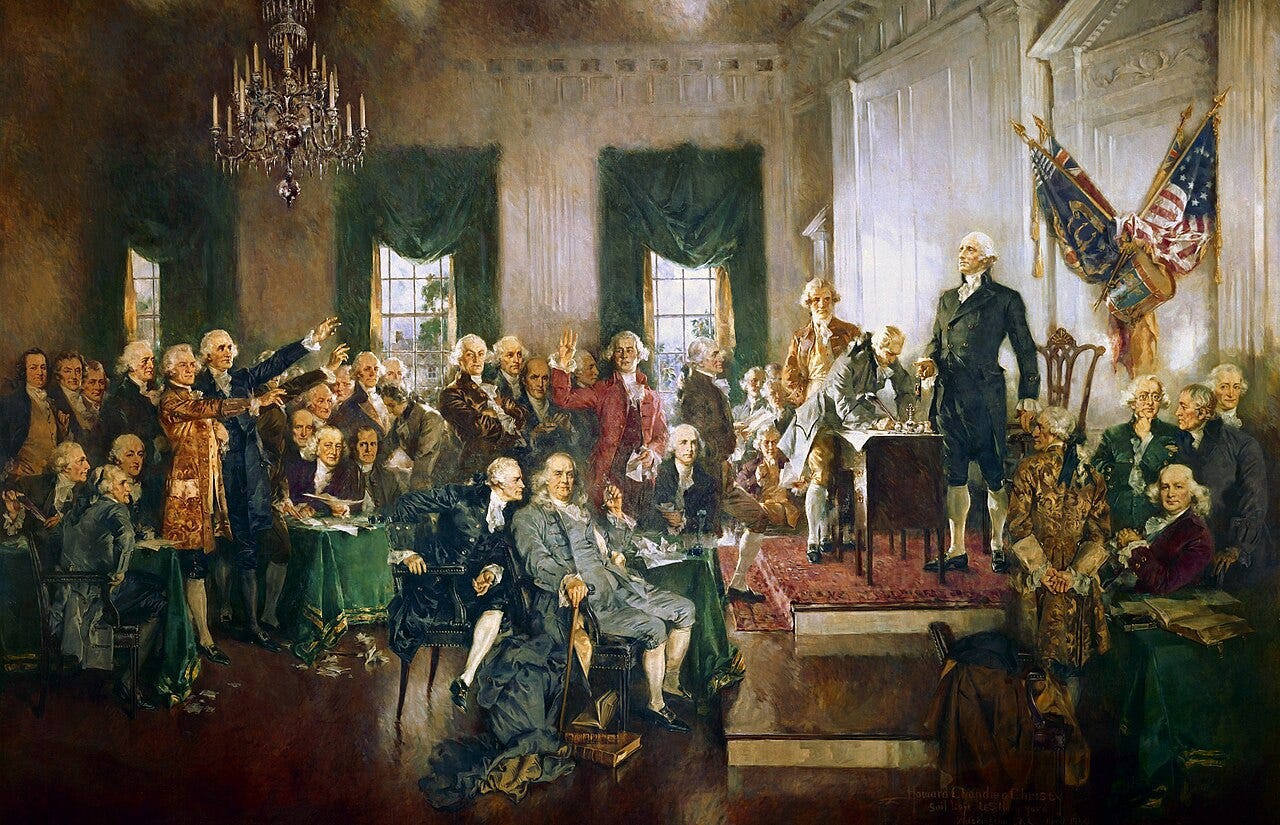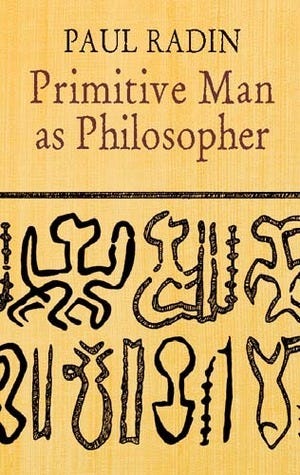The Myth of American Integration
Throughout history, America has wrestled with the concept of wholeness—a struggle that has persisted since the first settlers set foot on Indian soil.
A nation, while reflecting its people's values, beliefs, and aspirations, bears the undercurrents that quietly map its course. For America, the pendulum of expression is in continual swing. It spotlights the rift within its collective psyche: a perpetual to-and-fro of excessive ego-centrism and splitting. In many ways, this psychological conflict is inevitable for a society still in its statu nascenti. In many respects, America was, and still is, the "shining city on the hill," where all eyes are on the up-and-coming champion. As if it were a child, gleaming with curiosity through a novel land while partially submerged in the shadow of its forefathers, onlookers eagerly wait in anticipation for the acts of the adolescent. It would not be erroneous to compare a national psyche to the individual one, for the individuals of a nation are the social microcosms representing the qualities of society at large. When viewed collectively, as most of America shows its attitude and behavior with no quarrel, it would be foolish to skim over the individual as if his contributions mean little in the grand structure of his nationhood. For early America, its advancement delivers the dichotomy of a unique nation, primarily conquered yet unaware of its disorder of psychological integration.
Within the commonwealth brewed an intense yearning for exploration, a vibrant seizure of the West and all its offerings. Such a time was ripe with psychological tension among the populace, uprooted and afloat in a new land. It is not difficult to imagine the novelty of a vast terrain fraught with risks as the earth beneath their feet teemed with the arteries of those already there. The desire for individuality came at the cost of a potential demise beyond the matriarchal wing of Old Mother Europe, the root and matter of fervent argonauts, who, in their midst of expedition, were nearing the precipice of an entirely foreign engagement. Moreover, the gradual progress across the western expanse brought the emigrant to experience levels of habitation that were alien and primordial to him. Underneath the conscious ambition of the individual, unique in his newfound "way of life"—a repetitive compromise for a passage through the West—the psychological disintegration of the mass of pioneers became a seizure of its own. Frederick Jackson Turner's Frontier Thesis highlights the growth and continual societal regrowth on the frontlines of westward development. Turner observes, "Thus American development has exhibited not merely advance along a single line but a return to primitive conditions on a continually advancing frontier line, and a new development for that area," and that "this perennial rebirth, this fluidity of American life, this expansion westward with its new opportunities, its continuous touch with the simplicity of primitive society, furnish the forces dominating American character." (Turner, Frederick Jackson. The Significance of the Frontier in American History, 1893).
Turner's inference of "a return to primitive conditions" and the flexibility of the American' way of life' is the willing romanticization of American idealism. Such imagery is a reminder of the gritty reality of life and the adaptation required for advancement. However, the journey to Turner's point of reflection did not go without adversity, inherited or physical. As the pioneer extended his influence across the land, he carried the customs of those before him, linked to Europe's early flourishing. As Turner put it, people bring their "inherited ways" to new lands, yet such methods inevitably undergo disintegration. Just as an infant is united in its primary self, so too were the vanguard pitching their tents across the prairie. Still, despite their efforts to preserve the identities they brought along, their constant engagement with the land—and its people—rooted in communal ownership created a fissure. European individualism confronted indigenous models of collective existence, and that is where the adolescent American ethos swelled in its steady development. Each branch of civilization endured a separation from the past, continually transforming.
In developmental psychology, the infant's journey toward individuality requires a positive disintegration of its primary, unified self. With this in mind, it would appear that American development had been in progress from the first inkling of leaving Mother Europe's womb. The early colonial settlers became the toddling archetype of a nation, beginning to gain footholds while simultaneously clinging to the inherited patterns, behaviors, values, and cultural frameworks of those before them. Despite the dependency, this reliance did not come without consequence, as the events leading up to the Revolutionary War can attest.
When analyzing the psychological environment of post-war America, it is important to differentiate between "fragmentation" and "positive disintegration." Polish psychologist Kazimierz Dąbrowski developed the theory of positive disintegration, which promotes the idea that periods of tension and anxiety are essential for personal growth. Without enduring such crises, an individual—or a nation—risks stagnating in the stage of "primary integration," possessing individuality but lacking autonomy and remaining overly impressionable to external influences. Dąbrowski's theory of personality development highlights that a unique personality is not inherently universal. Instead, individuals must consciously craft and cultivate it to embody their distinct character.
On the other hand, "fragmentation" is a postmodern term that reflects a more traumatic disruption of identity, often linked to ideas of dissociation and splitting. Various psychologists, including Sigmund Freud and Carl Jung, have explored this concept concerning identity, trauma, or dissociation. French psychologist Pierre Janet pioneered the study of dissociation, or the "splitting of consciousness" ("normal self" vs. "secondary self"), which laid the groundwork for later discussions of fragmentation. Similarly, Swiss psychiatrist Eugen Bleuler's coining of schizophrenia in 1908 further connected fragmentation to severe disruptions in personality and consciousness.
While individuals experience these cognitive conditions on a granular level, particularly those who have weathered the trauma of combat, it is fair to say that post-Revolutionary War America swayed on the hinges between fragmentation and positive disintegration: the war fractured its identity, yet provided the tension necessary to craft a new, autonomous personality, one distinct yet still influenced by its European roots.
With colonial identities dissolved in the decades following the war, a new identity takes shape through a reintegration period. The Constitution serves as both a framework for governance and a mechanism for reintegration, as it addressed the teetering nation and brought the fragmented states together to form a more unified national identity. By 1820, the states on the frontier's edge were chomping at the bit of expansion. Beyond the borders lay the foundations of a confident future, with Astor's Fur Company trading with the natives and fur trappers forming relations with inhabitants that would mold the prospects for the country. As mentioned by Turner in the Frontier Thesis, Francis J. Grund wrote in his book, The Americans In Their Moral, Social, and Political Relations, "It appears then that the universal disposition of Americans to emigrate to the western wilderness in order to enlarge their dominion over inanimate nature is the actual result of an expansive power which is inherent in them, and which by continually agitating all classes of society is constantly throwing a large portion of the whole population on the extreme confines of the State, in order to gain space for its development. Hardly is a new state or territory formed before the same principle manifests itself again and gives rise to a further emigration; and so is it destined to go on until a physical barrier must finally obstruct its progress." (Grund, Francis J. The Americans In Their Moral, Social, and Political Relations, 1837). The nation was again united upon a shared pursuit: driving a collective march into the frontier.
In his book, Grund further mentions, "If it be true that the life of nations and political institutions resembles that of individuals, it is equally true, that the different periods of their development are exposed to the same dangers." (Grund, Francis J. The Americans In Their Moral, Social, and Political Relations, 1837). The diseases that threatened the country boiled from within; quickly, under the facade of unity, sectionalism and economic instability stirred, culminating in the rupture of the Civil War—a breaking point in the nation's process of disintegration and reintegration. The war may have politically reunited the country, but the fractures it revealed—between regions, ideologies, and social structures—persisted long after the last battle. Many changes swept across the states, and a period of disintegration accompanied each one. The "dangers" Grund mentions may refer to 'the people' and their willingness to disavow a young nation in favor of something new based on their infant ideal; however, the rapid pace of growth represented a different type of threat, one that is innate in developmental psychology. With each milestone came barriers, unappreciated or not, and repetitive cycles of disintegration on westward advancements. The farther west the emigrants advanced, the "inherited patterns" they held began to convert slowly, then rapidly, as adaptability ruled over comfort. To say that the English, Germans, Scotts, or the French retained their traditions would not do justice to the reality of their assimilation into Indian ground. In order to inhabit and navigate the New World and unorganized territory, it became a natural interaction with the land and those who existed before them, which put the westward argonauts in a perpetual state of disintegration without room for pause or reintegration. With the floodgates opened to the West and territories seized—besides the Comancherian Empire that reigned the Southern Plains until the late 1870s—American settlers were hardly considered any more European than the natives in stock and behavior.
The adolescent nation's reintegration period seemed to reach its conclusion with the suppression and displacement of Native tribes. With the frontier 'closed,' as Frederick Turner would later describe it, America launched its case of permanency, claiming unity through the erasure of the Indian presence; it was no easy feat in the South. However, this era was built on unresolved transgressions, as the moral consequences of these actions remained buried in the nation's collective unconscious. Soon enough, the question of "what was done to the native" came back after the Indian Reorganization Act of 1934 reversed assimilation policies on tribal nations, and the interest in Indian culture and myth reignited under new perspectives. While Paul Radin's book Primitive Man As Philosopher was published in 1927, it remains one of the most significant anthropological inquiries into aboriginal civilization and beliefs.
Still, along with the nation recognizing its errors in the past, it has developed an obsession; this has been overtly on display in the collective American psyche, forced into both virtual and corporate settings, displaying psychological splitting. Psychological splitting, otherwise known as binary thinking, is the inability to simultaneously recognize both the positive and negative in something, preventing a person from forming a balanced, realistic perspective. In modern America, there is a stark split between idealized and demonized aspects of national identity. In Germany, historical reckoning has led to overcompensation through open migration policies and cultural pluralism, signaling an intentional distancing from its nationalist past. Contrarily, America's approach to its historical analysis is less linear and more cyclical, marked by recurring periods of idealization, guilt, and reactionary responses rather than a stable integration of its identity. Rather than embracing itself as a developing nation, America seems trapped in a loop of compulsive apology without resolution—constantly deconstructing its myths but struggling to reintegrate them into a coherent self-concept.
As a still young nation with many creative outlets to express itself, whether anonymously or otherwise, America's continuous engagement with its national symbols and myths—such as the "frontier" and the "American Dream"—acts as a form of societal symbolic processing. However, it often falls into repetitive cycles, which is natural for a juvenile. This predicament poses whether America will ever 'grow up.' Perhaps, just as the individual never arrives at a "fixed" point in life—nor should he—the country will continue similarly. The ebb and flow of collective nationalism, shame, guilt, and pride will represent this country on physical and virtual scales, from flags flown on lawns to those next to a person's username online.
In some way, this enduring struggle for growth and wholeness can be understood through Swiss psychoanalyst Carl Jung's concept of the child archetype, representing the potential for unity and self-realization. In his essays on The Psychology of the Child Archetype, he mentioned the 'wholeness' that the archetype represented, "It is a symbol which unites the opposites; a mediator, bringer of healing, that is, one who makes whole... It represents the strongest, the most ineluctable in every being, namely the urge to realize itself. It is, as it were, an incarnation of the inability to do otherwise." (C.G. Jung, The Archetypes and the Collective Unconscious, CW 9, Part 1, §278, §289). Through a Jungian lens, this quarrel mirrors America's early separation from Mother Europe—an act of individuation, the necessary but painful process of forging a distinct identity.
Nevertheless, as with any adolescent psyche, true wholeness remains elusive. America continues to waver between its myths and realities, pursuing integration but never quite reaching a final, fixed state. Francis Grund was ahead of his time in recognizing the parallels between an individual and the nation, and Turner's analysis of the seizure of the frontier will forever be a staple in American history. Lastly, this quote from Carl Jung is one to ponder in our modern age:
". . . It fares with nations as with the individual: if he grows too high in the air, his roots go down too deep, which means that however fast he progresses, he will after a time be overtaken by his own shadow, where he will find plenty of work to do on himself at home. In the individual, one calls it a conflict; in the nation, it's a civil war or revolution. I think the continuing divisions and upheavals will gradually lead to a state of balance which will form the basis for a reconstruction. But I think the phase of disintegration will last at least several decades more. I see no special social or political gain for our generation but an all the greater spiritual one. This, of course, is not identical with what used to be called the march of civilization." (Carl Jung, Letters Vol. 1, pages 128-129.)









Can a nation ever truly be "whole"? A tribe, perhaps. It seems to me America, and my country Canada, are far, far too large to ever be a united whole. There will be those people and classes of people that comform readily to the desires and ideas in the minds and on the papers of the heads of the nation building and the rest that must keep their heads down or be weeded out. A permanent situation.